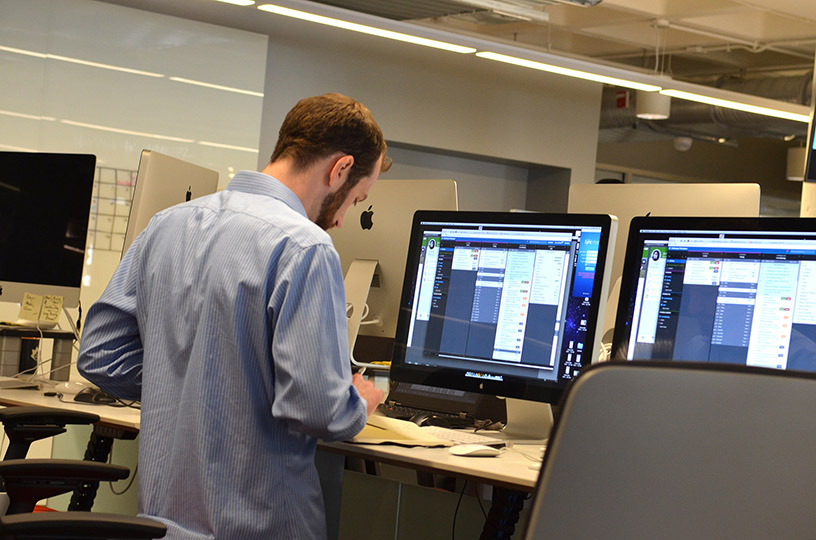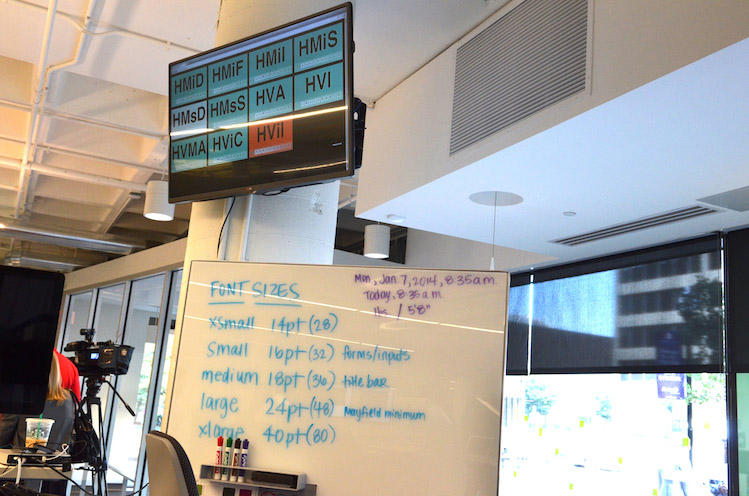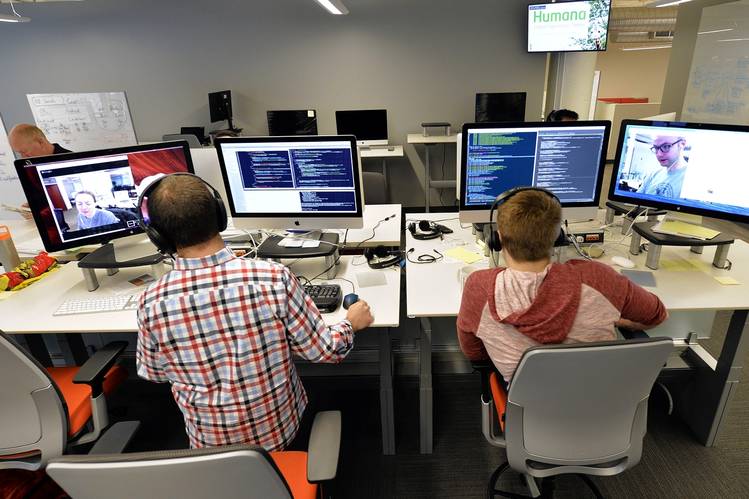Humana knows a thing or two about transformation. From its inception in 1961 as a nursing home company, through its period owning and running hospitals in the seventies and early eighties, the company founded by David Jones and Wendell Cherry has made a habit of reinventing itself. Now they are in the midst of yet another reinvention—as a healthcare provider with a laser focus on their customers’ well-being.
And there is one corner of the Louisville company where that reinvention takes a shape that mimics a small startup. As Practice Leader for Humana’s Digital Experience Center (DEC), Antonio Melo has a front-row seat for—and is an active participant in—Humana’s newest phase. We talked with Anthony and Product Manager Nick Hill about their team’s process, their challenges, and life with Tracker.

Antonio Melo: Humana is a company that has had transformative change in its DNA. It’s a little bit over 50 years old and it began as a nursing home company, then reinvented itself to be a hospital company, and then reinvented itself to be a traditional payer in the medical/dental/vision insurance business. Right now we’re finding ourselves in yet another epic of reinvention toward being a healthcare company focused on wellbeing. And that takes many different forms and many different sets of products and services that really comprise that. The biggest differentiation between where Humana was five years ago and where we are today, and where we see ourselves going, is that we are in the midst of focusing and orienting ourselves directly on the customers and the consumer. Where we differentiate ourselves today from the rest of the industry is this notion of wellness and wellbeing. If you look at any of our user experiences, that is a common core.
Antonio Melo: We’re investing in Humana’s culture to level up the core competencies of technology, product, and design so that we can better serve our customers nimbly and rapidly and efficiently. We’re really a learning and teaching organization and we use product development as the vehicle to teach others.
Nick Hill: The DEC is tasked with enabling the rest of the IT organization to develop software more quickly and efficiently. We do that by by partnering with different lines of business, different owners of products, to help them learn the process and try new things. Instead of teaching by standing up and pointing at diagrams or reading books, we teach by pairing, by working with them on certain projects so that they can then—after the engagement has dissolved—take back what they’ve learned and apply it within their organizations.
We work on developing products, whether it’s an iPhone app or a web page. Business comes to us and works with us on a specific problem. We utilize all the product management techniques to figure out the cause and behaviors of the users and get feedback and create these products iteratively and leanly until we’ve validated these assumptions and hypotheses and create an actual solution to the problem.
Antonio Melo: Do not allow the series of unanswerable questions and the face of the unknown or the fear that results from that to become obstacles or justification for you not to get started. Start small, but start today. Simply based on where you begin and what your focus is, you will uncover the relevant questions and quickly answer them in virtue of your work.
Nick Hill: You don’t have to change everything all at once. We do it in sort of Lean way—you start small, you do a couple of projects, you see if it works. It’s not this huge investment, not this corporate-wide, infrastructural change; it’s a small experiment that grows if it works. It’s a lot more palpable when you take those small bites and don’t commit 100% of your resources toward it.


Antonio Melo: One could say we were Agile to some degree, but you’re only as Agile as the organization around these teams is. Traditionally at Humana, there are departments for each asset you need and you create tickets to communicate with them, and then the speed with which they deliver you what you need to do your job varies anywhere from weeks to months to perhaps longer. That’s the area where the enterprise really needs continued focus.
We want what we do to be commonplace through the organization. We’re in the process of figuring out our sphere of influence and to what degree these practices remain sticky in the organization without our direct development. We’re just beginning to get a perspective on those questions.
Antonio Melo: We all use Tracker. It’s certainly a core tool for the team that is used on a daily basis and is used by all teams that work here in the DEC. what we’ve found is that once our engagements cease, Tracker use continues by our clients as they go back to the traditional core organization.
It helps solidify in a tangible way the way we work—singular focus, ruthless prioritization—and allows for the team to calibrate their own level of description required to deliver their software. There are designers or engineers who need a greater level of detail, and Tracker accentuates all of those attributes. By contrast, think about the Scrum teams and the Kanban teams that are here not as a direct result of our efforts. We use Tracker to be singularly focused on it because we do not believe that all projects are of equal importance, and that is something that plagues the organization systemically.
There is this notion that we use here called "Tracker Time." How much Tracker Time are we getting with the client/product manager is an indication of what opportunity we have to really teach them these Lean, Agile methods, how engaged they are, how productive they are, and what their relationship is to the rest of the team. Tracker Time is an indication of pairing time. How much time do our resident DEC PMs have with our visiting client product managers pairing using Tracker to deconstruct and prioritize their vision into actionable units of ultimately working software?
Nick Hill: It’s a tool used to help explain and demonstrate prioritization, story writing, the size of the story, really everything that goes into the creation and prioritization of the backlog is done with and in Tracker.
Antonio Melo: We’re leading the next wave of transformation: organizationally, culturally, technologically, and we’re trying to do it in a way in which we are gracefully teaching others and trying to become a trusted advisor to the traditional core business.
Want to share your team's story? Please email us and tell us a bit about your company.